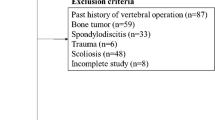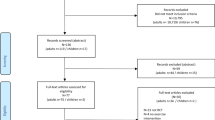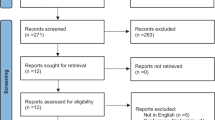Abstract
Object
Functional electrical stimulation (FES) for paraplegic patients, with the long-term goal of ultimately restoring muscle function, is associated with several positive effects: improvement of blood circulation, skin condition, peripheral trophism and metabolism, prophylaxis against decubitus ulcer and better physical fitness. Since fibres of denervated muscles (lacking a supplying nerve) need to be activated directly, the fraction of elicited muscle tissue follows the geometric distribution of the electrical field, which can be simulated using electrophysiological computer models. Experimental validation of these results, however, has not yet been established.
Materials and methods
We acquired T 2 parameter images using a multislice multi-spin-echo MR sequence before and immediately after FES in nine denervated paraplegic patients and three healthy subjects in order to visualise the geometric distribution of activation by electrically induced muscle stimulation in denervated versus innervated (healthy) thigh muscle.
Results and Conclusion
After realigning and normalisation, maps of relative T 2 increase were calculated. The results demonstrate that the spatial distribution of short-term effects of FES of denervated muscle tissue of paraplegic patients who regularly perform FES can be visualised by T 2 parameter images. This may be used to refine models of the electrical field of FES in muscle and fibre activation in the future.
Similar content being viewed by others
References
Kern H, Hofer C, Mödlin M, Forstner C, Raschka-Högler D, Mayr W, Stöhr H (2002) Denervated muscles in humans: limitations and problems of currently used functional electrical stimulation training protocols. Artif Organs 26: 216–218
Mayr W, Hofer C, Bijak M, Rafolt D, Unger E, Reichel M, Sauermann S, Lanmueller H, Kern H (2002) Functional electrical stimulation (FES) of denervated muscles: existing and prospective technical solutions. Basic Appl Myol 12: 287–290
Kern H (1995) Funktionelle Elektrostimulation paraplegischer Patienten. Österr Z Phys Medizin 5: 1–78
Martinek J, Reichel M, Rattay F, Mayr W (2005) Analysis of calculated electrical activation of denervated muscle fibers in the human thigh. Artif Organs 29: 444–447
Reichel M, Mayr W, Rattay F (1999) Computer simulation of field distribution and excitation of denervated muscle fibers caused by surface electrodes. Artif Organs 23: 453–456
Reichel M, Breyer T, Mayr W, Rattay F (2002) Simulation of the three-dimensional electrical field in the course of functional electrical stimulation. Artif Organs 26: 252–255
Polak JF, Jolesz FA, Adams DF (1988) Magnetic resonance imaging of skeletal muscle. Prolongation of T1 and T2 subsequent to denervation. Invest Radiol 23: 365–369
Koltzenburg M, Bendszus M (2004) Imaging of peripheral nerve lesions. Curr Opin Neurol 17: 621–
Fleckenstein JL, Watumull D, Conner KE, Ezaki M, Greenlee RG, Bryan WW, Chason DP, Parkey RW, Peshock RM, Purdy PD (1993) Denervated human skeletal muscle: MR imaging evaluation. Radiology 187: 213–218
Bendszus M, Koltzenburg M, Wessig C, Solymosi L (2002) Sequential mr imaging of denervated muscle: experimental study. Am J Neuroradiol 23: 1427–1431
Aagaard P, Andersen JL, Dyhre-Poulsen P, Leffers AM, Wagner A, Magnusson SP, Halkjaer-Kristensen J, Simonsen EB (2001) A mechanism for increased contractile strength of human pennate muscle in response to strength training: changes in muscle architecture. J Physiol 534: 613–623
Hayashi Y, Ikata T, Takai H, Takata S, Ishikawa M, Sogabe T, Koga K (1997) Effect of peripheral nerve injury on nuclear magnetic resonance relaxation times of rat skeletal muscle. Invest Radiol 32: 135–139
Mödlin M, Forstner C, Hofer C, Mayr W, Richter W, Carraro U, Protasi F, Kern H (2005) Electrical stimulation of denervated muscles: first results of a clinical study. Artif Organs 29: 203–206
Kern H, Hofer C, Mödlin M, Forstner C, Mayr W, Richter W (2002) Functional electrical stimulation (FES) of long-term denervated muscles in humans: clinical observations and laboratory findings. Basic Appl Myol 12: 291–299
Carraro U, Rossini K, Mayr W, Kern H (2005) Muscle fiber regeneration in human permanent lower motoneuron denervation: relevance to safety and effectiveness of FES-training, which induces muscle recovery in SCI subjects. Artif Organs 29: 187–191
Kern H, Boncompagni S, Rossini K, Mayr W, Fanò G, Zanin M, Podhorska-Okolow M, Protasi F, Carraro U (2004) Long-term denervation in humans causes degeneration of both contractile and excitation-contraction coupling apparatus, which is reversible by functional electrical stimulation (FES): a role for myofiber regeneration. J Neuropathol Exp Neurol 63: 919–931
Fleckenstein AL, Canby RC, Parkey RW, Peshock RM (1988) Accute effects of exercise on MR imaging of skeletal muscle in normal volunteers. Am J Roentgenol 151: 271–237
Hug F, Bendahan D, Fur YL, Cozzone PJ, Grelot L (2004) Heterogeneity of muscle recruitment pattern during pedaling in professional road cyclists: a magnetic resonance imaging and electromyography study. Eur J Appl Physiol 92: 334–42
Jehenson P, Leroy-Willig A, de Kerviler E, Duboc D, Syrota A (1993) MR imaging as a potential diagnostic test for metabolic myopathies: importance of variations in the T2 of muscle with exercise. Am J Roentgenol 161: 347–351
Kern H, Hofer C, Strohhofer M, Mayr W, Richter W, Stöhr H (1999) Standing up with denervated muscles in humans using functional electrical stimulation. Artif Organs 23: 447–452
Hofer C, Mayr W, Stöhr H, Unger E, Kern H (2002) A stimulator for functional activation of denervated muscles. Artif Organs 26: 276–279
Moser E, Schuster J, Gomiscek G (1989) Analysis of relaxation time data from a low-resolution 1H-NMR-pulse-spectrometer. Physiol Chem Phys Med NMR 21: 123–132
Gersonde K, Tolxdorff T, Felsberg L (1985) Identification and characterization of tissues by T 2-selective whole-body proton NMR imaging. Magn Reson Med 2: 390–401
Walker P, Lerski R, Mathur-De Vre R, Binet J, Yane F (1988) Preparation of agarose gels as reference substances for NMR relaxation time measurement. EEC Concerted Action Program. Magn Reson Imaging 6: 215–222
Collins DL, Neelin P, Peters TM, Evans AC (1994) Automatic 3D intersubject registration of MR volumetric data in standardized Talairach space. J Comput Assist Tomogr 18: 192–205
Abramoff MD, Magelhaes PJ, Ram SJ (2004) Image processing with ImageJ. Biophotonics Int 11: 36–42
Rasband WS (1997–2007) ImageJ. National Institutes of Health, Bethesda
Patten C, Meyer R, Fleckenstein J (2003) T 2 mapping of muscle. Semin Musculoskelet Radiol 7: 297–305
Author information
Authors and Affiliations
Corresponding author
Rights and permissions
About this article
Cite this article
Meyerspeer, M., Mandl, T., Reichel, M. et al. Effects of functional electrical stimulation in denervated thigh muscles of paraplegic patients mapped with T 2 imaging. Magn Reson Mater Phy 21, 219–226 (2008). https://doi.org/10.1007/s10334-008-0113-7
Received:
Revised:
Accepted:
Published:
Issue Date:
DOI: https://doi.org/10.1007/s10334-008-0113-7




